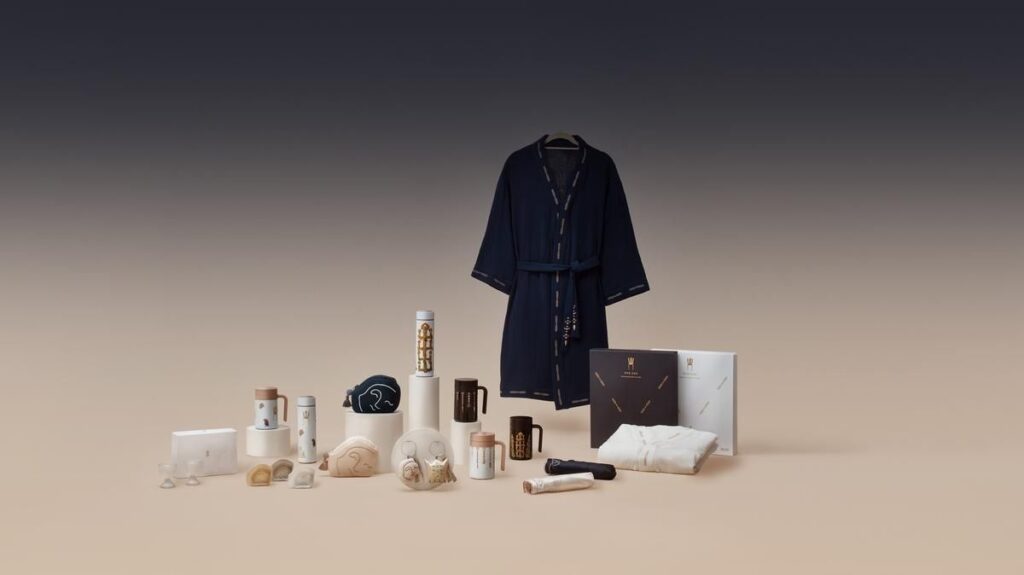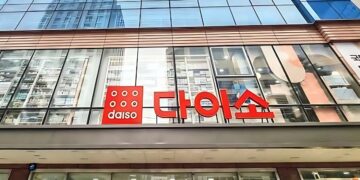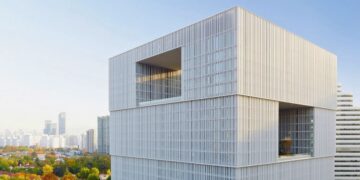Experience Gyeongju APEC 2025 food and souvenirs: classic Hwangnam-ppang, chalbori-ppang, hanok desserts, and elegant Silla-crown souvenirs to bring home.
As the APEC 2025 Summit approaches, this ancient city is revealing another side of its charm. Once the heart of the Silla Kingdom (57 B.C.–935 A.D.), Gyeongju is now a stage for both cultural diplomacy and culinary creativity. The city is welcoming delegates and travelers with a showcase of traditional flavors, artisan goods, and modern dining that blend history and innovation.
APEC Meets Silla Heritage
Hosting the Asia-Pacific Economic Cooperation (APEC) Leaders’ Meeting has turned Gyeongju into a living gallery of Korean craftsmanship. Streets, museums, and cafés are decorated with Silla-inspired designs. Local artisans and chefs are collaborating to introduce heritage to the global audience arriving for APEC.
The Gyeongju National Museum has released a new 17-item souvenir line to mark the summit. Each piece, from mugs and scarves to gold-crown earrings, draws inspiration from Silla’s royal regalia. The collection blends ancient motifs with modern design, symbolizing harmony between the past and the present.

A Taste of Gyeongju
Hwangnam Bread: The City’s Sweet Legacy
No visit to Gyeongju is complete without Hwangnam-ppang, or Gyeongju bread. The pastry, first baked in the 1930s, has a thin crust filled with smooth red bean paste. Many bakeries offer special APEC edition boxes with gold-crown patterns. The bread’s rich sweetness pairs well with green or barley tea.
Also, try chalbori-ppang, a soft barley pancake filled with red bean paste. Its chewy texture and mild flavor make it a favorite souvenir. Both treats can be found in cafés along Hwangnidan-gil, a street that mixes hanok charm with trendy food stops.
Heritage Reimagined on the Table
Restaurants across the city are reinventing local cuisine for international guests. Byeolchaeban, a famous hanjeongsik restaurant, serves dishes like abalone porridge, lotus-leaf rice, and spicy beef soup (yukgaejang) made with local herbs.
In the Bomun Lake Resort area, hotels highlight regional ingredients such as Gyeongju honey and wild mugwort. Their menus merge tradition with global trends, offering elegant yet comforting Korean flavors. Many chefs emphasize sustainability, sourcing ingredients from local farms.
Café Culture in Hanok Style
The Hwangnidan-gil district has become a hub for café lovers. Traditional hanok houses have been converted into elegant dessert cafés and restaurants.
Some highlights include:
- 987 Pizza, known for thin-crust pizzas with Korean toppings like bulgogi and perilla leaves.
- Hanok Café Sandalwood, famous for its honey lattes and barley desserts.
- Chaeum Dessert Studio, offering handmade macarons and madeleines shaped like Silla roof tiles or Cheonmado (the famous “Heavenly Horse” from Silla tomb murals).
At night, soft lanterns light up the alleyways, creating a cozy and nostalgic mood.
Souvenirs That Tell a Story
Beyond food, Gyeongju’s APEC initiative is spotlighting artisans and traditional craftspeople. Visitors can shop for:
- Gold-crown–inspired jewelry — earrings, pins, and bracelets modeled after the royal regalia of Silla.
- Handcrafted ceramics from local pottery villages, featuring traditional cloud and phoenix motifs.
- Herbal teas and natural skincare products are made with regional botanicals like mugwort, jujube, and chrysanthemum.
- Honey gift sets, celebrating Gyeongju’s 1,000-year-old beekeeping heritage, are beautifully packaged for diplomatic gifting.
Many of these products are part of APEC’s “local culture showcase,” which supports artisans and eco-friendly materials.
APEC-Themed Streets and Experiences
Gyeongju’s city center has embraced “slow tourism” for APEC visitors. To welcome visitors, Gyeongju has expanded pedestrian zones and added bilingual signs around landmarks. QR codes on shopfronts lead to interactive maps with nearby restaurants and attractions. Evening shoppers can enjoy ambient lighting and street performances as part of the ongoing Gyeongju Light Festival, giving the city a festive yet relaxed atmosphere.
During summit week, APEC Cultural Pavilions near Bomun Lake display art, food, and crafts from other Korean provinces and APEC member nations. Evening performances and open-air markets turn the historic city center into a lively cultural exchange.
Gyeongju Beyond the APEC 2025 Summit
This transformation is not temporary. Local officials plan to make Gyeongju a model of heritage-based tourism that connects the Silla legacy with modern experiences. With more than 15 billion won (US $10.5 million) invested in infrastructure and creative projects, the APEC initiative has given the city a new identity — elegant, cultural, and forward-looking.
When night falls, the scent of fresh bread drifts through the streets. The glow of hanok windows reflects on stone walls. Visitors can taste the essence of Silla in every dessert, every craft, and every story told by the locals.
Gyeongju during APEC 2025 is not just a place to see — it’s a place to savor.
Travel Essentials
- Must-Try Foods: Hwangnam-ppang, chalbori-ppang, abalone porridge, lotus-leaf rice
- Best Shopping Spots: Hwangnidan-gil, Gyeongju National Museum gift shop, Bomun Craft Market
- Souvenirs to Buy: Silla crown jewelry, honey sets, Cheonmado cookies
- Best Visiting Time: Late October to mid-November for APEC events and autumn foliage
Gyeongju’s mix of taste, tradition, and innovation shows how a historic city can welcome the modern world. For APEC 2025 visitors, every bite and every handmade souvenir tells the story of a city that continues to shine — as it has for over a thousand years.
Related Posts
95 total views, 69 views today
















